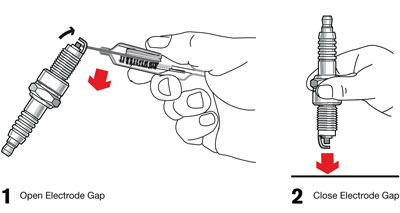Tech-TorqueYour technical guide to using Gunson tools
Contents

Remember!
When finished, remove the clamp and cloth bag and return the abrasive grit media to the plastic bag. Pay particular attention to keeping the abrasive grit media dry.
Always keep fresh, unused abrasive media ready for use. After an amount of use, the grit media will break down and lose its abrasive properties. Do not be tempted to use if the grit media is in this condition.
Dispose of the media responsibly and refill with fresh media. Replacement grit is available - Part No: 77112
It is not recommended to clean or regap modern Iridium spark plugs. In this case refer to the plug manufacturer’s specific documentation.
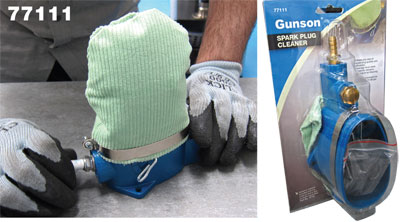
Ideal for the home workshop, the Gunson spark plug cleaner cleans any size of plug quickly and efficiently.
Powered from your compressed air supply the abrasive blast action cleans the centre and outer electrodes plus the important inner insulator area.
The spark plugs on modern cars and motorcycles rarely get fouled as the engines run so cleanly; the spark plug is generally considered a consumable item and large mileages can be attained (50,000 to 100,000 miles) before they need to be replaced. Thus there is no real need to clean them at any point.
Not the same however, on older and classic cars and motorcycles, or even stationary engines or lawn mowers. Many spark plug manufacturers recommend media blast cleaning as the most efficient method and the Gunson 77111 is a cost effective solution and a worthwhile addition to the home workshop.
When a spark plug gets fouled with carbon deposits (and on a worn engine, oil contamination also), as well as the centre and outer electrodes being contaminated, the carbon gets right up into the inner insulator area(refer to diagram) and this is a major cause of the spark plug misfiring or not firing at all. The traditional quick clean with abrasive paper between the electrodes does not clean out this vulnerable inner insulator area and the spark plug will not perform correctly after this sort of ‘cleaning’.
The only reliable way of properly cleaning the sparkplug is the blast media method which as well as cleaning off the two electrodes also blasts away carbon deposits from right up inside the inner insulator area.
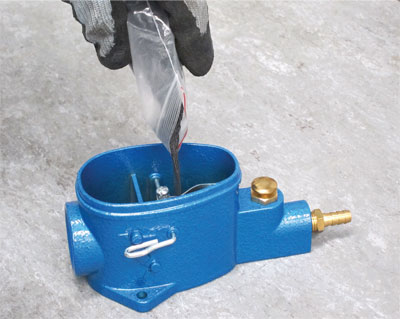
The 77111 is supplied ready to go (you need a compressed air supply capable of a sustained70 - 80psi) and is equipped with a standard air line fitting which you may prefer to replace with a quick release type suitable for your existing workshop airline fittings.
Referring to the supplied instructions, first fill the rear chamber of the cleaner with the supplied abrasive grit media. This abrasive grit is also available separately (Gunson part number: 77112)and it is recommended to buy a bag or two at the same time as you purchase your 77111 cleaner.
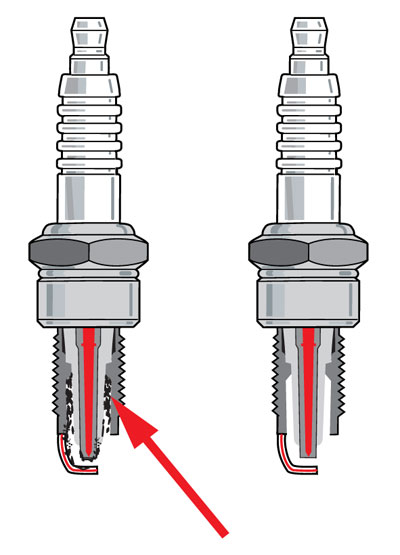
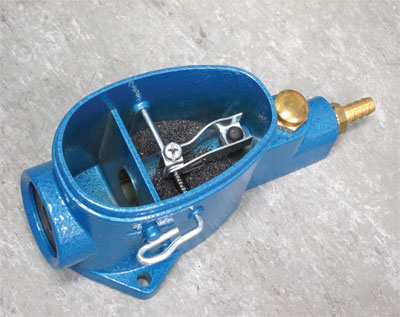
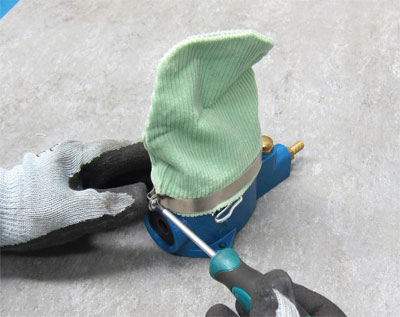
Fit the cloth bag over the open chamber and secure with the securing clamp, then connect up to the compressed air supply. Make sure the air supply is dry as the spark plug cleaner will not operate successfully if the grit media gets damp.
The cleaner body is equipped with lugs which enable it to be secured permanently on the workbench if required.
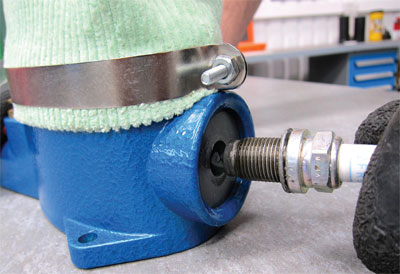
Inspect the fouled sparkplug. If the firing end is wet and oily, make sure you clean the spark plug first with a quick drying cleaner, for example, contact cleaner or brake cleaner.
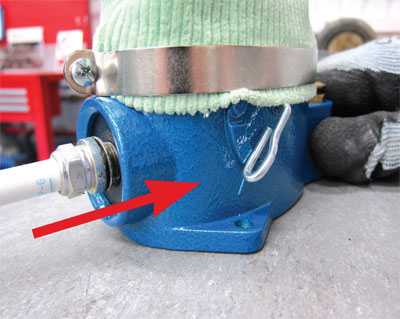
Insert the spark plug into the rubber grommet and hold both the cleaner body and the spark plug firmly. Set the two way lever to the down position -this will draw abrasive grit from the rear chamber to blast clean the spark plug.
Make sure you are wearing eye protection, then operate the brass valve to clean the spark plug.
During the cleaning process, rotate the spark plug and move through different angles so that the
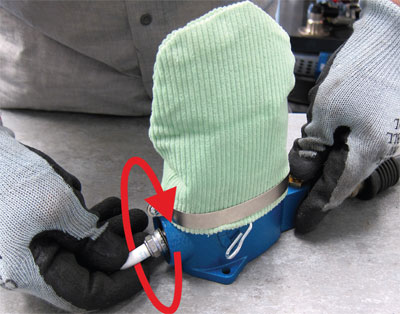
grit media reaches every area of the electrodes and inner insulator.
Initially blast for about 30 seconds, then release the valve, pull the plug out and check it. If it is still dirty then put it in again and check again until it is clean.
Keep the rear chamber filled with abrasive grit media and periodically empty the forward chamber of grit and return it to the rear chamber.
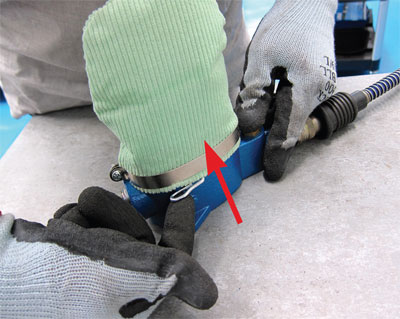
When checking and setting the spark plug gap, if the gap needs closing then gently tap the outer electrode on a firm surface (for example, a wooden block). If the gap needs to be opened up, don’t be tempted to jam a screwdriver between the electrodes, instead use the proper tool and steadily bend the outer electrode up to the correct dimension. The combination feeler gauge, brush, file and electrode adjustment tool from Laser Tools (part number: 2480) is a good example and excellent value for money.
When you are satisfied that the plug is clean, set the two way lever to the up position (compressed air only) and operate the brass valve again, to clean off abrasive media from the spark plug. It is a good ideal to finally give the plug a good blast with an air gun (again, make sure you’re wearing eye protection - the abrasive grit media is not eye-friendly!), to make sure you’ve completely removed any remaining grit. Then check the electrode gap and refit.
